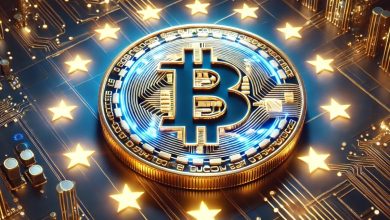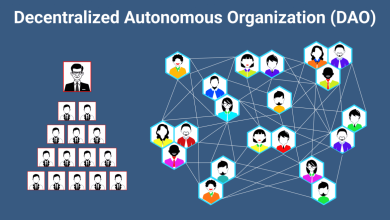Blockchain Technology

What is Blockchain Technology?
Blockchain technology is a revolutionary method of recording and verifying transactions. Initially created to support the cryptocurrency Bitcoin, blockchain has evolved to become a foundational technology with applications far beyond digital currency. It enables secure, decentralized, and transparent data storage, making it ideal for industries that require trust and verification.
In simple terms, a blockchain is a distributed digital ledger that stores information across multiple computers. Each record, or “block,” is linked to the previous one, forming a continuous “chain” of data. This makes it nearly impossible to alter information once it’s recorded, adding a layer of security and trust that traditional databases often lack.
How Does Blockchain Work?
To understand blockchain, think of it as a digital ledger or logbook that stores information in blocks. Each block contains data about a transaction, such as who sent it, who received it, and the amount. Once a block is full, it’s linked to the previous one, creating a chain of blocks that holds the entire transaction history.
Blockchain has three main components:
- Decentralization – Unlike traditional databases controlled by a central authority, blockchain is maintained by a network of computers called “nodes.” Each node has a copy of the entire blockchain, making it decentralized. This prevents any single entity from controlling or manipulating the data.
- Transparency – All transactions on a blockchain are visible to every participant in the network. While user identities remain private, the transaction details are available to everyone, ensuring transparency and accountability.
- Immutability – Once data is added to a blockchain, it cannot be changed or deleted. This makes blockchain ideal for recording data that requires a high level of trust, such as financial transactions, contracts, or identity records.
Blockchain uses a process called “consensus” to validate new transactions. In most blockchains, like Bitcoin, nodes use a method called Proof of Work (PoW), where they solve complex mathematical problems to verify and add new blocks. Another method, Proof of Stake (PoS), allows participants to validate transactions based on the number of coins they hold, making it more energy-efficient than PoW.
Key Features of Blockchain Technology
Blockchain has several unique features that set it apart from traditional systems:
- Decentralized – No central authority manages the data. Instead, a network of participants validates and maintains the blockchain, reducing the risk of data tampering or manipulation.
- Transparency – Every participant can view the transactions, fostering a sense of trust within the network.
- Security – Data on a blockchain is highly secure. Because each block is linked to the previous one, altering a single block would require changing every subsequent block, which is nearly impossible.
- Reduced Costs – By eliminating the need for intermediaries (like banks or brokers), blockchain can reduce transaction costs, making it ideal for peer-to-peer transactions.
- Increased Efficiency – Blockchain transactions are fast and streamlined, especially when compared to traditional banking systems, which may take days to process cross-border payments.

Applications of Blockchain Technology
Blockchain has found uses across various industries, thanks to its security, transparency, and efficiency. Here are some of the main applications:
- Cryptocurrencies – Bitcoin and Ethereum are the most well-known cryptocurrencies built on blockchain. These digital currencies use blockchain to enable peer-to-peer transactions without a central authority, providing users with control over their money.
- Smart Contracts – Smart contracts are self-executing contracts where terms are directly written into code. They automatically execute when certain conditions are met, eliminating the need for intermediaries. This makes them valuable in industries like finance, real estate, and law.
- Supply Chain Management – Blockchain can provide end-to-end visibility into supply chains, helping companies track products from origin to destination. This increases transparency, reduces fraud, and allows for better quality control.
- Healthcare – Blockchain can securely store patient records, ensuring data privacy and accuracy. It allows doctors and patients to access health information seamlessly and securely, improving the efficiency and trustworthiness of healthcare systems.
- Voting Systems – Blockchain has the potential to revolutionize voting by ensuring secure, tamper-proof election results. With blockchain-based voting, votes can be verified and counted accurately, reducing the risk of election fraud.
- Intellectual Property – Blockchain can protect intellectual property rights by creating a permanent, unalterable record of ownership. This helps artists, writers, and musicians secure their rights and receive fair compensation for their work.
- Energy Management – Blockchain can enable peer-to-peer energy trading, allowing individuals to buy and sell surplus energy, such as solar power, directly with each other.
Benefits of Blockchain Technology
The unique features of blockchain bring many benefits, making it attractive for various applications:
- Enhanced Security – Blockchain’s encryption and decentralized structure make it resistant to hacking and unauthorized access. This is especially valuable in sectors that handle sensitive data.
- Greater Transparency – Blockchain allows everyone on the network to view transaction history, fostering transparency and reducing fraud. This transparency is crucial in industries like finance and supply chain management.
- Faster Transactions – Blockchain eliminates the need for intermediaries, enabling faster transaction processing. This is particularly beneficial for cross-border payments, which typically take days using traditional methods.
- Cost Efficiency – By removing intermediaries, blockchain reduces transaction costs. For example, using blockchain for financial transactions eliminates the need for bank fees.
- Improved Traceability – Blockchain provides a clear, traceable record of transactions. This is helpful in tracking products through the supply chain, making it easier to identify sources of errors or counterfeit goods.
- Empowerment and Ownership – In systems like cryptocurrencies, blockchain gives users control over their assets without relying on a central authority, such as a bank. This empowers users and provides greater ownership of their finances.
Challenges of Blockchain Technology
Despite its advantages, blockchain also faces some challenges that hinder its widespread adoption:
- Scalability – Blockchains can struggle to handle a large volume of transactions due to limitations in processing power. This can result in slow transaction times and higher fees, especially in popular networks like Bitcoin.
- Energy Consumption – Proof of Work blockchains like Bitcoin consume significant energy due to the computational power required to validate transactions. This raises environmental concerns and has led to the exploration of more energy-efficient alternatives.
- Regulatory Issues – Since blockchain operates independently of governments, it faces regulatory challenges. Many governments are still trying to develop frameworks to manage blockchain applications, particularly in finance.
- Privacy Concerns – While blockchain offers transparency, it also poses privacy challenges. Public blockchains allow everyone to view transaction history, which may raise concerns for users who prefer to keep their data private.
- Complexity and Accessibility – Blockchain is still a relatively new technology, and its complexity can make it difficult for non-technical users to understand or trust. Additionally, developing blockchain-based solutions requires technical expertise, limiting accessibility for some organizations.’

Blockchain vs. Traditional Databases
Blockchain and traditional databases store and manage data differently:
- Decentralization – Traditional databases are usually centralized, managed by one entity. Blockchain is decentralized, with data stored across multiple nodes.
- Data Immutability – Data in traditional databases can be modified or deleted, while data on a blockchain is immutable, making it more secure and reliable.
- Transparency – Blockchain transactions are visible to all participants, ensuring transparency, while traditional databases are typically only accessible to authorized users.
- Cost and Efficiency – Blockchain can reduce costs by removing intermediaries, while traditional databases often require third-party involvement.
Future of Blockchain Technology
Blockchain has only scratched the surface of its potential. Here’s what the future may hold:
- Increased Adoption – As industries recognize blockchain’s benefits, we’ll likely see broader adoption across various sectors, including healthcare, real estate, and finance.
- Integration with IoT – Blockchain and IoT could work together to create secure networks for connected devices. For example, blockchain can verify data shared by IoT devices, improving data security and integrity.
- Environmental Solutions – Researchers are exploring greener alternatives to Proof of Work, such as Proof of Stake, to reduce blockchain’s energy consumption. This will make blockchain more sustainable in the long run.
- Decentralized Finance (DeFi) – DeFi aims to create a new financial system built on blockchain, without traditional banks. DeFi applications like lending, borrowing, and insurance are already gaining popularity, providing users with more control over their financial assets.
- Blockchain in Government – Governments may adopt blockchain for record-keeping, voting, and public administration. This could improve transparency, reduce fraud, and increase efficiency in government processes.
- Legal Recognition – As blockchain becomes more mainstream, legal systems worldwide may develop frameworks to recognize and regulate blockchain transactions, especially in finance and contracts.
Final Thoughts
Blockchain technology has the potential to transform the way we manage data, conduct transactions, and ensure trust. From financial services and supply chains to healthcare and voting, blockchain’s applications are vast. While challenges like scalability and regulatory hurdles remain, ongoing research and innovation will likely lead to solutions.
As more industries explore blockchain’s potential, we may see a future where trust and transparency are built into the very fabric of our digital interactions. Blockchain isn’t just about cryptocurrencies; it’s a powerful tool that could reshape the way we interact, do business, and share information in a more secure, decentralized world.




